What's New
Displaying results 2041 - 2050 of 4052
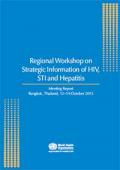
Resource | Publications,
The universal 2015 Sustainable Development Goals call for an end to the HIV/AIDS epidemic along with tuberculosis, hepatitis and other communicable diseases. Though the adult HIV prevalence is low in the WHO South-East Asia Region, prevalence among key populations (KPs) is high. Chronic viral hepatitis is 30 times more prevalent than HIV while prevalence of sextually transmitted infections (STIs) among KPs is high in some Member States. Ending epidemics necessitates a “data revolution”, which encompasses better-quality, local, real-time, granular and disaggregated data to be made available to design and support a sustainable response that ensures no one is left behind. This workshop was held to discuss how to strengthen the strategic information about HIV, viral hepatitis and STI programmes for evidence-based decision-making at the policy and programmatic levels.
As countries move towards ending the HIV, STI and hepatitis epidemics, there are increasing needs and opportunities for strengthening the use of strategic information for these programmes.
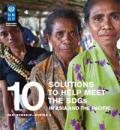
Resource | Publications,
This publication shows how change works. It is a collection of 10 transformative development stories for development practitioners. It explains how the featured projects have yielded lasting, far-reaching results, and accelerated early progress on multiple Sustainable Development Goals. The interventions profiled here demonstrate how much can happen when commitment is sustained, and when governments, private sector, civil society and UNDP work together. Innovation, delivering at large-scale, and partnership are key elements of the successful projects in the publication. These stories of change document how we can design projects that help us realize the 2030 Agenda promises, particularly leaving no one behind.
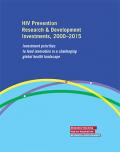
Resource | Publications,
This annual accounting of funding for biomedical HIV prevention research tracks trends and identifies gaps in investment. In 2015, reported funding for HIV prevention R&D decreased from US$ 1.25 billion in 2014 to US$1.20 billion. However, overall funding has remained essentially flat for over a decade. While investments towards research for preventive vaccines and female condoms increased from 2014 levels, investments towards microbicides, PrEP, TasP, VMMC and PMTCT declined.
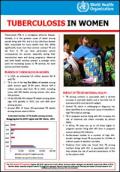
Resource | Publications,
Tuberculosis (TB) is a contagious airborne disease. Globally, it is the greatest cause of death among people living with HIV, and is a top infectious disease killer responsible for more deaths than HIV. While significantly more men than women contract TB and die from it, TB can have particularly severe consequences for women, especially during their reproductive years and during pregnancy. Maternal and child health services present a strategic entry point for increasing access to TB services, for both women and their families.
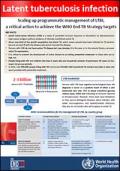
Resource | Fact Sheets,
- Latent tuberculosis infection (LTBI) is a state of persistent immune response to stimulation by Mycobacterium tuberculosis antigens without evidence of clinically manifested active TB.
- About one-third of the world's population has latent TB, which means people have been infected by TB bacteria but are not (yet) ill with the disease and cannot transmit the disease.
- Persons with LTBI do not have active TB disease but may develop it in the near or in the remote future, a process called TB reactivation.
- It is critical to prevent the development of active disease by providing preventive treatment to those who are at high risk.
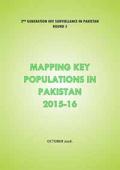
Resource | Publications,
The Overall objective of this mapping study was to update population size estimates of selected key populations (PWID, FSWs, MSM & TGs) to create evidence for developing action plans for HIV prevention interventions in Pakistan. A total number of 23 cities/towns were selected for Mapping. This included 13 cities in Punjab province, 6 in Sindh Province and 2 cities each in KPK and Baluchistan provinces.
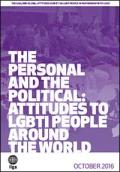
Resource | Publications,
In this report, ILGA presents data on two sets of attitudes that the survey reveals – firstly, how respondents respond at a personal level to encountering LGBTI people or issues, and secondly the more ideological or political attitudes they may hold. The first set of questions cover issues such as do you know someone LGBT, how would you feel about a LGBT neighbor, or if your child presented LGBT, while the second set of questions tend to start with ‘should’: should same sex marriage be legal, should human right be for everyone, regardless of SOGI. This survey shows how in various cases there are contradictory attitudes in the personal and the political, and of course, this varies widely at country levels.
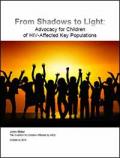
Resource | Publications,
For many years now, the children of HIV-affected key populations—sex workers, transgender people, people who use drugs, and gay men and other men who have sex with me—have remained in the shadows, figuratively tucked behind their parents’ legs, out of sight. A broad alliance of community groups, NGOs and funders is emerging to bring these children into the light.
Between November 2014 and September 2016, an international working group gathered information, analysed it, and then came together with community, funder and NGO allies to identify the key issues and develop advocacy demands—and began to draw a roadmap for an advocacy strategy.
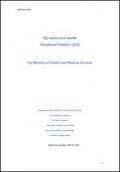
Resource | Publications,
Over the past decade there has been significant investment in strengthening child health programmes and services in Fiji. This has brought improved health outcomes for neonates, infants and children. However to date, there has been less investment in the health and wellbeing of adolescents.
The purpose of this document is to provide the Ministry of Health and Medical Services (MoHMS) and other government Ministries and their partners with a concise review and analysis of the health needs of adolescents in Fiji. The focus is on physical and mental health (including sexual and reproductive health, mental disorder and substance use, nutrition and rheumatic heart disease). Some relevant social determinants are highlighted (particularly education and employment), as these are important drivers for adolescent health and well-being.
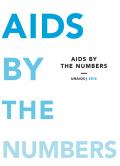
Resource | Data Sheets,
Sixteen years of progress since the International AIDS Conference was last held in Durban. Millions of lives saved. But to end the AIDS epidemic there are new milestones to reach, barriers to break and frontiers to cross.
The data provided in this document are just a sample of the data available from UNAIDS. Additional data are available at AIDS Info.





